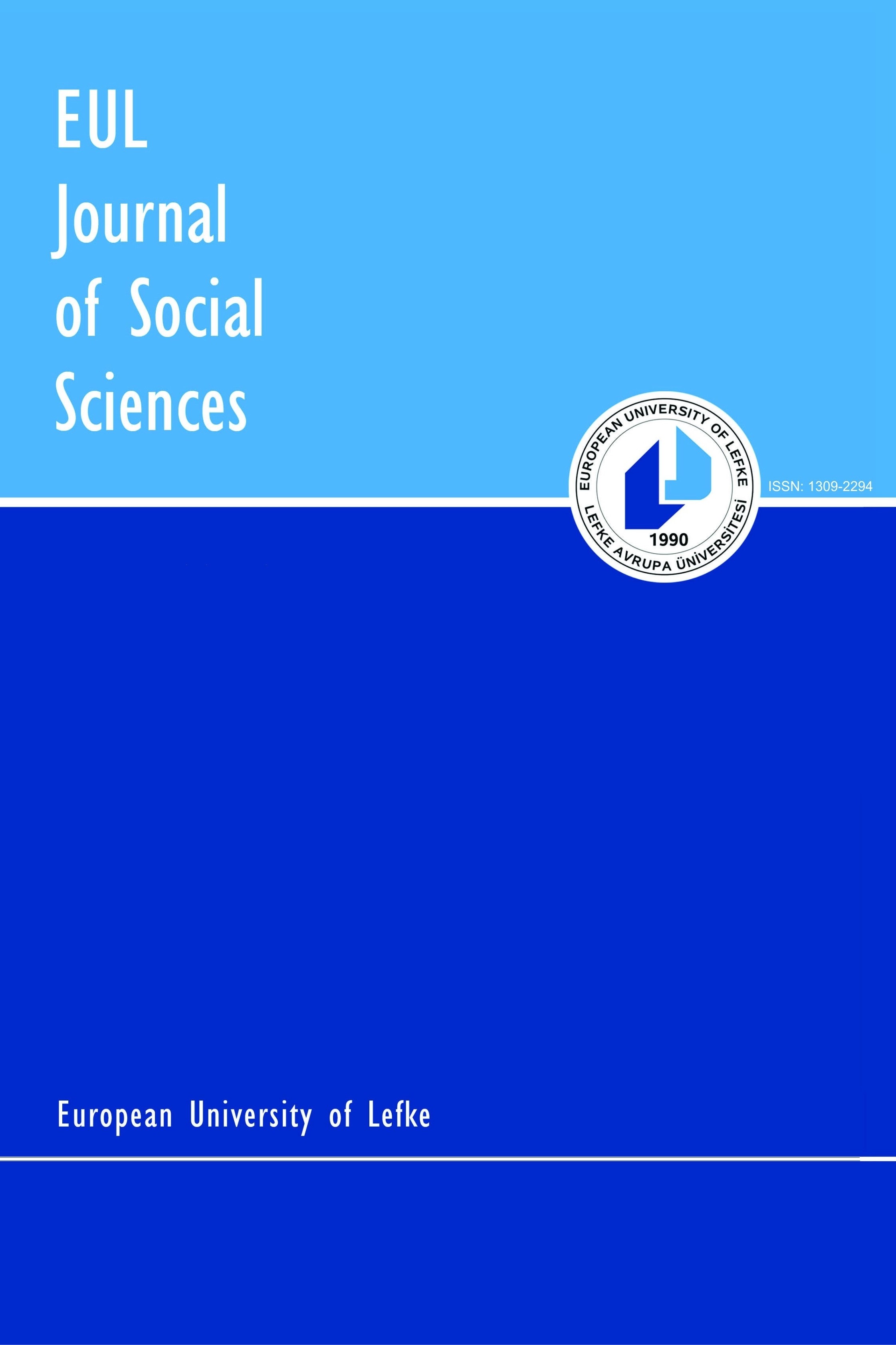Yükselen Nijerya Ekonomisinde Ev Fiyatları Getirilerinin Enflasyondan Korunma Kapasitesi
Öz: Enflasyon riskine karşı koruyucu bir araç olarak konut sahipliği Nijerya’nı başenti Abuja
içn araşıımışı. Araşımada beşyerleşm bögesindeki konutlar seçldi. Daha öceki çlışalar
kıa döemde konut sahipliğnin enflasyon riskini en küçü kareler yöteminin kullanarak ve kıa
döem içn araşımışardı Bu çlışa kıa ve uzun döemde konut getirilerinin ensflasyondan
korunma kapasitesini araşımaktadı. Çlışa kıa döem enflasyonist etkiyi ölçmek için en
küçük kareler yöntemini, ADF durağanlık testini ve uzun dönem etkisini ölçmek için de Engel
Granger koentegrasyon testini kullanmıştır. Sonuçlar kısa dönemde konut piyasasının
enflasyondan korunma sağlamadığını ortaya koymuştur. Koentegrasyon regresyon sonucuna göre,
uzun döenmde konut piyasasında tam bir korunma sağlandığı ve etkinin de 72,1 % - 88,2 %
aralığında olduğu hesaplanmıştır.
Anahtar Kelimeler: Konut fiyat getirileri, gerçek enflasyon, beklenen enflasyon, beklenmeyen
enflasyon
Anahtar Kelimeler:
Konut fiyat getirileri, gerçek enflasyon, beklenen enflasyon
Inflationary Hedging Capacity of House Price Returns in Emerging Economy of Nigeria
Abstract: Property asset as a protective devise against the risk of inflation is investigated in the
Capital city of Nigeria (Abuja). Five residential housing zones were selected for the study. the
general use of ordinary least squares by the previous studies has been faulted on the ground that it
can only offer short term inflationary characteristics in the housing market. This study further
identified inflationary hedging capacity of house return by examining both short run and long run
inflationary characteristics in Abuja housing market. The study utilized Ordinary least squares (to
show short run inflationary characteristics), Augmented Dicker Fuller (ADF) to test is used to test
for the stationarity in the data, Engle Granger cointegration to establish long run relationships and
cointegrating regression analysis to establish long run inflationary characteristics in Abuja
Housing Market. The result FMOLS revealed that housing markets failed to provide a complete
hedge across all the markets against dirt of inflation within a possible short run. The result of
cointegating regression revealed that housing market provide a complete hedge across all the
market in the long run, and the overall market influence is between 88.2%-72.1%.
Keywords: House price returns, actual inflation, expected inflation, unexpected inflation
Keywords:
House price returns, actual inflation, expected inflation,
___
- Amonhaemanon, D., Marc J. K., De Ceuster A. C, Jan A. C., & Hau, L. L. (2013), “The Inflation-Hedging Ability of Real estate Evidence in Thailand: 1987-2011”, Procedia Economics and Finance, 5(2013): 40-49.
- Arnason, O., & Persson, S. (2013), “Swedish Real Estate as a Hedge Against Inflation With Comparison Stocks, Bonds and Gold”, A Master of Science thesis submitted to the Department of Real Estate and Construction Management. KHT Architecture and the Built Environment. 2012. Accessed 19 June 2013.
- Bello, M. O. (2004), “The Inflation Hedging Characteristics of Nigerian Residential Property Investment”, Journal of Property Research and Construction, 1(1): 40-55.
- Belo, M., & Abgatekwe, A. (2002), Project Management in Property Development: the Nigeria Experience, Ibadan: University Press PLC. Case, K. E. (1992), “The Real Estate Cycle and the Economy: Consequence of the Massachussetts Boom of 1984-89”, Journal of Urban Studies, 29(2): 171-183.
- Dabara, D. I. (2014), “The Inflation-Hedging Performance and Return Characteristic of Residential Property Investment in Gombe, Nigeria”, AIR, 3(1): 71-83.
- Kwangware, B. (2010), “The Impact of Macroeconomic and Financial Factor on the Performance of The Housing Property Market in South Africa”, Department of Economics and Economic History: Rhodes University Conference. Grahamstorm
- Leung, A. (2010), “Commercial Property as an Inflation Hedge; an Australian perspective”, Journal of Pacific Rim Research, 16(1): 97-115.
- Miregi, M. O. & Obere, A. (2014), “Effect of Market Fundamental Variable on Property Prices in Kenya- A Case of Nairobi Residential Property Market”, Journal of Economics and Finance, 5(5): 101-113.
- Odu, T. (2011), “An analysis of relative inflation hedging capacities of prime commercial properties in Lagos”, Global Journal of Human Social Science, 11(10): 42-51.
- Ogunba, O., Obiyomi, O. & Dugeri, T. (2013), “The Inflation Hedging Potential of Commercial Property Investments in Ibadan, Nigeria”, West Africa Built Environment Research (WABER) Conference Accra, Ghana, 1101-1111.
- Oluwasegun A., & Dabara, I. D. (2013), Inflation-hedging Capability and Riskreturn Strategies of Commercial Real Estate Investment in Nigeria. In: Proceedings of African Regional Conference on Sustainable Development. February 11-14, 2013, Conference Centre, University of Lagos, Nigeria. 8(2):54-68.
- ISSN: 1309-2294
- Yayın Aralığı: Yılda 2 Sayı
- Başlangıç: 2010
- Yayıncı: Lefke Avrupa Üniversitesi
Sayıdaki Diğer Makaleler
Kritik Faktörlerin Ödenmemiş Konut Kira Bedellerine Katkısı, Minna, Nijerya
Olurotimi Adebowale KEMIKI, Adeyosoye Babatunde AYOOLA, İsmail OJETUNDE, Rukayat Adeola OGUNBAJO, Shien Stephen KUMA
Yükselen Nijerya Ekonomisinde Ev Fiyatları Getirilerinin Enflasyondan Korunma Kapasitesi
M. B. WAHAB, O. S. OLA, A. İ. SULE, A. S. ADEPOJU, Z. U. DODO
İtibari Paranın Kullanımdan Kaldırılmasına Yönelik Teorik Bir Değerlendirme
Umut EVLİMOĞLU, Umut Tolga GÜMÜŞ
Kelvin ONYIBOR, Sununu İbrahim BAH, Adebayo TOMIWA
Social Media and Crisis Management: A Review and Analysis of Existing Studies
Oberiri Destiny APUKE, Elif Asude TUNCA
Türkiye’de Mahalli İdareler Halk Denetçisi Düzenlemesi Üzerine Bir Değerlendirme
